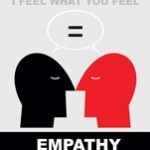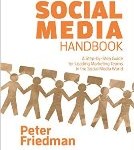
The AMA announced through a statement on 11/17 that they just voted to support a ban on DTC advertising. They cited the causes as over-prescribing of more expensive treatments and rising prescription prices. The AMA is being hypocritical since doctors advertise directly to consumers. Insurance companies advertise health coverage to consumers. Labs and test centers advertise. Hospitals advertise. Dentists advertise.
AMA is not calling to ban ads for any of these health care services, just drugs. AMA is essentially saying consumers do not need the information provided in DTC ads because the doctor knows best. Consumers should remain uninformed of new drug options because they may ask for them and force compliant doctors to prescribe something they prefer not to. It seems they think their members have no ability to say no to an inappropriate consumer request.
The AMA wants to control the flow of drug information because it has this outdated notion that consumers are better off knowing less. DTC is advertised information, clearly done to spur drug demand. It is but one source of information for consumers. The savvy consumer knows it is advertising and is skeptical of the claims made. They are information hungry and may use DTC as a starting point to search out reviews of the advertised drug as well as alternatives.
The days of the all knowing doctor who only has patient best interest in mind are over. Doctors are human, sometimes not up to date on drugs, and they are busy. Sometimes they take the easy route and prescribe what they are used to writing. DTC forces doctors to be aware of what is advertised. If they have to answer patient inquiries on DTC advertised drugs then so be it and welcome to the information age.
Today we have competing financial interests in the health care industry. Payers want to pay less for drugs, consumers want the best medications, and doctors get caught in the squeeze between insurers and patients. Government is also involved in trying to reduce cost and would also prefer to keep patients out of the drug selection discussion.
AMA can call for whatever action they like but advertising is free speech. After almost 20 years of seeing DTC broadcast ads, you think they would have by now learned to deal with patients asking about drug brands. DTC will not be banned and AMA would help consumers more by doing studies on how doctor and patient can more effectively select and properly take drugs. Calling for a ban is easy to do but not very helpful for consumers. Hilary and Bernie will applaud, and use the AMA call for a ban as support for their anti-drug company rhetoric.
While DTC will not realistically face an outright ban, drug companies, advertising agencies, and media sellers need to be aware that there is a lot that can happen short of a ban. FDA can make advertising execution more onerous through more stringent risk and fair balance requirements, and Congress can use tax policy to restrict advertising deductibility. Everyone in the DTC space should be politically active, contact their Congressmen to oppose DTC restrictions, and understand Hilary is dead serious in her dislike for drug companies. There is very little political downside bashing drug companies so expect them to be a featured villain in the 2016 election soap opera.


 There is room for a variety of insight techniques to understand the patient journey. But one of the most powerful, yet under-used, is ethnography. Contrary to the way some people think about it, ethnography is not just interviewing patients at home (or doctors in their offices). Ethnography is a way of observing people and understanding them using a holistic perspective.
There is room for a variety of insight techniques to understand the patient journey. But one of the most powerful, yet under-used, is ethnography. Contrary to the way some people think about it, ethnography is not just interviewing patients at home (or doctors in their offices). Ethnography is a way of observing people and understanding them using a holistic perspective. As we look back over the past year for lessons learned that we will take into the New Year, there are many we could choose: from celebrities on social media to controversial pricing. But based on our work with thousands of patients, helping to connect them with biopharma companies large and small, one of the top areas of concern right now is protecting their personal information.
As we look back over the past year for lessons learned that we will take into the New Year, there are many we could choose: from celebrities on social media to controversial pricing. But based on our work with thousands of patients, helping to connect them with biopharma companies large and small, one of the top areas of concern right now is protecting their personal information.
 It’s taken a while, but the pharmaceutical industry has slowly realized the value of social media to reach caregivers, health care professionals, and patients to raise awareness and even track adverse events. According to the IMS Institute for Healthcare Informatics, only half of the 50 largest pharmaceutical companies worldwide use social media, and only 10 are on the Big Three: Facebook, Twitter, and YouTube.
It’s taken a while, but the pharmaceutical industry has slowly realized the value of social media to reach caregivers, health care professionals, and patients to raise awareness and even track adverse events. According to the IMS Institute for Healthcare Informatics, only half of the 50 largest pharmaceutical companies worldwide use social media, and only 10 are on the Big Three: Facebook, Twitter, and YouTube.